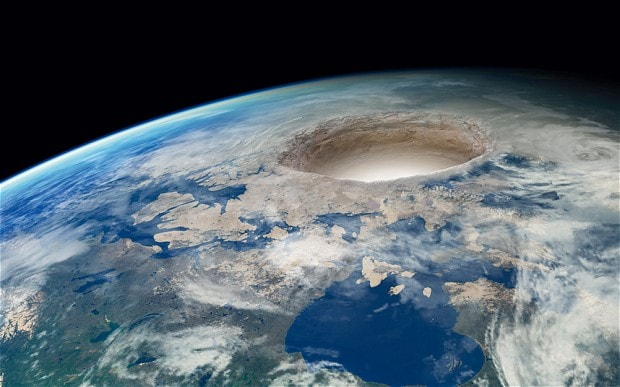One of the more annoying claims made by pseudoscientists is that because scientists are so specialized these days, that they cannot “see the forest for the trees” as the metaphor goes. But they, as outsiders, totally can and therefore show that all of science is wrong. Or something like that.
It is true that sub-sub-sub-sub-sub-…-sub fields do exist, and these days that’s a manifestation of really how far we’ve come in science. Back in the day (say, 400 years ago), we knew comparatively so little that someone could study for a few years and get a good understanding of the state of human scientific knowledge. These days, you need an advanced degree to understand a sub-field of science, such as physics:optics, or psychology:adolescent (the colon indicating the sub-field).
If you want to work in a field, you pretty much must specialize, otherwise you will never be out of school because you won’t know enough about that broader topic.
But we always have to incorporate other fields of study, even if we don’t realize we’re doing it. I’ve tried to point out in my podcast and blog how tugging at one string by a pseudoscientist unravels so many other strings in unrelated subjects that it completely disproves their point about being able to have a broad knowledge base from which to draw new connections.
But that’s a long-winded way to get to why I’m even talking about this. I’m home right now for a period of 10 days, between travel, and I’m using the time to convene a working group. A working group is sort of like a mini-workshop. Where a workshop, in science, tends to be a specialized conference convened where people give presentations meant more to explore a topic rather than to brag about their latest research.
Last May, I convened a workshop entitled, “Workshop on Issues in Crater Studies and the Dating of Planetary Surfaces.” Succinctly, it was intended as a step back from the minutia we deal with to look at the original problems we were trying to solve, how we tried to 50 years ago, why we did it the way we did then, and what we’re trying to do now with craters and what outstanding problems we still have. I was able to bring in several founders of the field (since it really got going in the 1950s and 60s), and we addressed a wide range of issues.
Among those was statistics. We’re doing statistics the way we did it in the 1970s, before we had computers and when people had to draw graphs in papers by hand. We realized that the field of statistics has changed considerably and the way we were doing things and are doing things is not necessarily completely correct, nor is it necessarily the best way.
So, I also had money to bring in three statisticians to the workshop to learn.
And this week, since five of us crater people who work in the Boulder area were at the workshop and are interested in bringing in this completely unrelated (but related) field of statistics into planetary geophysics, we’re holding a working group. The five of us, one of the statisticians who is local, and one of the statisticians who I flew in from Los Alamos.
And it’s fascinating. If nothing else (because I’m sure no one reading this cares about statistics of crater populations), I find it fascinating to watch the interaction between the statisticians and the planetary scientists. We know some of our issues, and we are completely steeped in our language to describe it. They know stats, and they are constantly bringing in similar problems in other fields that are solved certain ways to see if it can apply. It’s taken a year to almost get on the same page just with what we mean when we talk about different graphs.
And they sometimes come up with potential solutions, but then we say “no” because it completely misrepresents the physical situation.
Today, after working all morning and being brought back up to speed yesterday, one of the surprising things that we (planetary scientists) had to grasp was that we may need to start thinking about craters – at least the population of craters, the ensemble – in a completely different way: Rather than discrete objects which we observe (with a definite location and size), think of them as a probability, where each observation is actually a distribution (albeit narrow). If we can do that, then we can bring in a huge field of well established statistics to deal with some of our fundamental problems with how we work with craters. Like simple things … like how we really should be assigning uncertainty to our measurements and results.
And throughout this, there was the constant nagging question in the back of my head of how we’re going to convince the entire field that this is the proper way to go — if it’s the proper way to go. Fortunately in our working group we have one of the founders of the field, so if we can convince him, we can figure out how to write up the paper to convince others.
This is a long post … and it’s a lot of stream of consciousness. From it though, I want you to get a few things:
- Even in highly specialized disciplines, they must always be informed by and incorporate other disciplines, even in completely different fields (astronomy/geology:planetary-gephysics:surface-processes:impact-craters:crater-populations … meet mathematics:statistics:[huge list of stuff they’re bringing in]).
- Sometimes, to update a field of study and bring it in line with what’s known in others, you have to think of the problem in a completely new way, but one that remains informed by its roots and always in what we’re really trying to understand (as in, they can model whatever, but we constrain them by keeping it physically meaningful and realistic).
- There’s always inertia in a field of study, but there are always ways to bring about change if that change gets you to a more correct methodology or answer.
This post is also my way of updating you all on what I’ve been doing, partially, work-wise for the past few days and why the podcast still hasn’t come out with a new episode in over a month.






